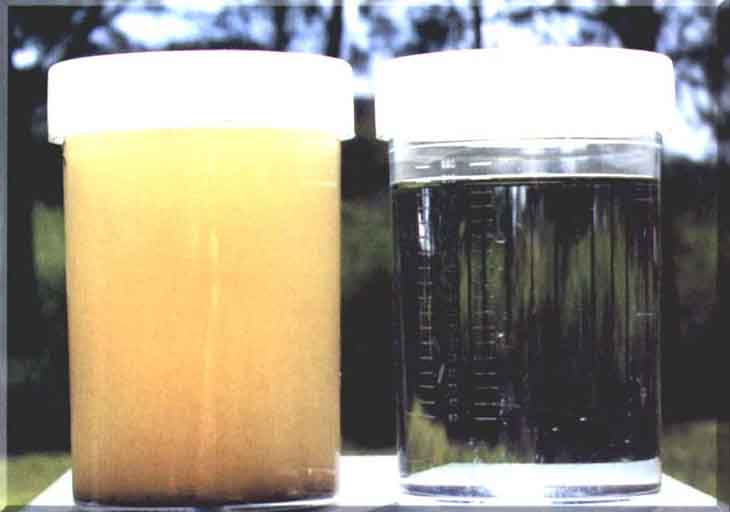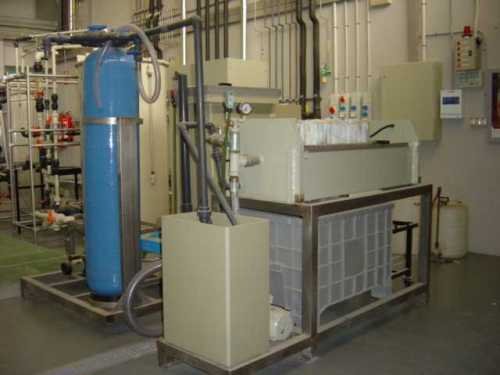Can we help you?
Contact us

Can we help you?
Contact us

Thank you for contacting us
Your form has been submitted successfully Our team will contact you again as soon as possible.
Whooppss...!! An error has occurred
Try sending later or write an email directly to areaempresas@ua.es

INFO
SHEET
DOWNLOAD
EXECUTIVE
ABSTRACT
CONTACT DETAILS: Research Results Transfer Office-OTRI
University of Alicante
Tel.: +34 96 590 99 59
Email: areaempresas@ua.es
http://innoua.ua.es
The Applied Electrochemical and Electrocatalysis Group (LEQA) at the University of Alicante has a high experience and know-how to develop and carry out the removal of pollutants in wastewaters by electrocoagulation (EC).
A pilot plant fully equipped with the necessary infrastructure and with ability to treat 100L/h of wastes is available in order to develop the pre-industrial phase and scaling-up of these processes.
This technology could be of interest to several industries: chemical, tannery, textile, etc.

Applied Electrochemistry includes the use of electrochemical processes in any type of industrial application: synthesis of pharmaceutical products, batteries, effluent treatment, metallic electrodeposition, etc. The Applied Electrochemical and Electrocatalysis Group (LEQA) at the University of Alicante is focused since several years on the investigation of new electrochemical processes and the transfer of knowledge and technology to the industry.
Treatment of wastewater by EC has been practiced for most of the 20th century with limited success and popularity. However, in the last decade, this technology has been increasingly used in Europe for treatment of different types of industrial wastewater containing foodstuff waste, oil wastes, dyes, suspended particles, chemical and mechanical polishing waste, organic matter from landfull leachates, defluorination of water, synthetic detergent effluents, mine wastes and heavy metal containing solution.
Coagulation is a phenomenon in which the charged particles in colloidal suspension are neutralized by mutual collision with counter ions and are agglomerated, followed by sedimentation. The coagulant is added in the form of suitable chemical substances. Alum [Al2(SO4)3.18H2O] is such a chemical substance which has been widely used for ages forwastewater treatment. The mechanism of coagulation has been the subject of continual review. It is generally accepted that coagulation is brought about primarily by the reduction of the net surface charge to a point where the coloidal particles, previously stabilized byelectrostatic repulsion, can approach closely enough for van der Waal’s forces to hold.

them together and allow aggregation. The reduction of the surface charge is a consequence of the decrease of the repulsive potential of the electrical double layer by the presence of an electrolyte having opposite charge. In the EC process, the coagulant is generated in situ by electrolytic oxidation of an
appropriate anode material. In this process, charged ionic species are removed from wastewater by allowing it to react with floccules of metallic hydroxides generated withingthe effluent.
The last stage of the R&D projects is carried out in the 120m2 Pilot Plant that our group owns at the University of Alicante. This plant is equipped with vapour, cooling water, water softener, vacuum system, gases (air, nitrogen, CO2, Ar,…). The plant owns a chemical reactor of 50L with a rectification column, an electrochemical filter press reactor, an electrodyalisis stack and an electro-floculation coagulation system. All these sytems are automated and can be used to develop and optimize various types of electrochemical processes: organic and inorganic electrosynthesis, electrodialysis, wastewater treatment by direct or indirect electrooxidation, electrocoagulation. The maximum production capacity in all cases is 1m3 solution/day SGITT-OTRI.
ADVANTATGES
1. EC requires simple equipment and is easy to operate.
2. Sludge formed by EC is easy to dewater. Also, EC produces low quantity of sludges.
3. Flocs formed by EC are similar to chemical floc, except that EC flocs contain less water, are and more stable, and therefore, can be separated faster by filtration.
4. The EC process has the advantage of removing the smallest colloidal particles,because the applied electric field sets them in faster motion, thereby facilitating thecoagulation.
5. The gas bubbles produced during electrolysis can carry the pollutant to the top of the solution where it can be more easily removed.
INNOVATIVE ASPECTS OF THE TECHNOLOGY
- The EC cell is controlled electrically and have no moving parts, thus requires less maintenance
- The EC process avoids uses of chemicals and so there is no problem of neutralizing excess chemicals.
- EC produces effluent with less total dissolved solids (TDS) content as compared with chemical treatments.
The Applied Electrochemical and Electrocatalysis Group is seeking for:
• Partners willing to introduce the electrocoagulation system in its facilities.
• R&D departments of any company interested in carrying out feasibility studies on the use, industrial or not, of this technology.
In the following link you will find a description of the nature and activities of the Research Group:
https://cvnet.cpd.ua.es/curriculum-breve/grp/en/electroquimica-aplicada-y-electrocatalisis/356
Footwear and Textile
Stone and Marble
Water Resources
Chemical Technology
Carretera San Vicente del Raspeig s/n - 03690 San Vicente del Raspeig - Alicante
Tel.: (+34) 965 90 9959




